Home » Jazz Articles » Interview » Tim Collins: Mixing It Up
Tim Collins: Mixing It Up
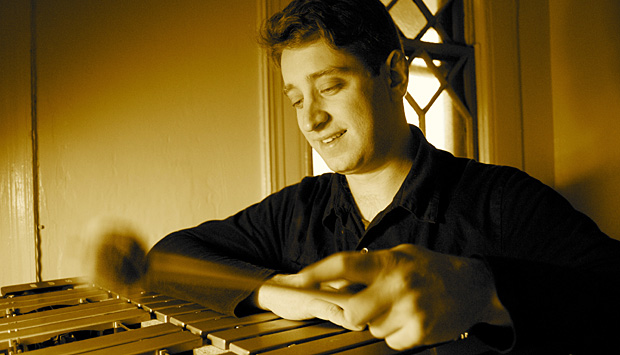
I love simple melodies that I want to keep singing over and over again. I want to feel the same chills when we play it that I do when I hear Björk sing it.
In the two short years since he's resettled in Munich from New York, after a short stay in Salzburg, Collins has learned German, landed teaching jobs at the Bavarian International School and the New Jazz School of Munich, released Castles and Hilltops, and taken his place alongside Matthias Bublath, Martin Scales, Ulrich Wangenheim, Tom Reinbrecht, and Christoph Holzhauser as a driving force on the Munich jazz scene.
As seems to be the case with many vibraphonists, he started out on drums and piano before taking up marimba and vibes. Thanks in part to the physicality of the instrument, he's a dazzling soloist on stage with a fiery impassioned energy and a soulful inclination that would also work well in rock, soul, blues, and jam settings. At the same time, his considerable musical training and ample skills, in classical music and jazz, give him the ability to handle the intricacy and harmonics of very demanding music. This openness and solid musical foundation are also evident in his engaging compositions.
Chapter Index
Living & Working in Europe
All About Jazz: When people you meet in Europe hear you are from New York, they probably envision NYC. But in reality, you grew up near Lake Champlain on the border to Vermont, and relatively close to Montreal. Aside from language differences and cruising along the Autobahn at 110 mph, how would you characterize the adjustment of living in Bavaria or Salzburg?
 Tim Collins: Hmmm, well let me say that moving to Salzburg was definitely an adjustment, but then moving to Munich afterwards seemed like an adjustment back in the direction of what I was used to. Once you get past the language difference, to me Munich actually feels a lot like the U.S. Nowadays, it's easy to call overseas with Skype and stuff, and it's not too hard for me to bring my American habits with me—like watching Yankees games for example—the only problem is that they are on at 1:00am, German time. Ugh.
Tim Collins: Hmmm, well let me say that moving to Salzburg was definitely an adjustment, but then moving to Munich afterwards seemed like an adjustment back in the direction of what I was used to. Once you get past the language difference, to me Munich actually feels a lot like the U.S. Nowadays, it's easy to call overseas with Skype and stuff, and it's not too hard for me to bring my American habits with me—like watching Yankees games for example—the only problem is that they are on at 1:00am, German time. Ugh.AAJ: Your German is coming along quite well, growing up so close to Canada, did you study French?
TC: Vielen Dank. I actually took four years of French in high school, but I had no desire to learn it, and as a result I only know how to say one or two things that are basically useless [laughs]. I've learned so much more German in two years than I ever did French. My family has a lot of languages in it though, my sister speaks fluent French, and my grandparents can speak Hungarian, French, German, English, and I think also Spanish.
AAJ: What has surprised you most about living in Europe?
TC: How easy it is to ride a bicycle everywhere—not just for fun, but as an actual mode of transportation. Also the fact that it's possible to have a part-time teaching job that still pays health insurance benefits. Hint, hint.
AAJ: As a jazz musician what are the advantages and disadvantages of living in a city like Salzburg or Munich as compared to NYC?
TC: Well I guess there's some obvious ones and some unexpected ones too. New York is amazing and there are so many musicians to be inspired from or to play with—but it can also be a nightmare for someone like me who can't make up his mind.
Salzburg's main advantage for me was the access to classical music, which was really inspiring. I saw a performance of Mozart's "Requiem," but it was an actual requiem mass on All Souls Day (which is Halloween in the States.) Munich is a great mix of both though. There are lots of good musicians here, and there is definitely a strong jazz audience. I'm also teaching a lot, which keeps me inspired and helps my German.
AAJ: You've literally worked with musicians from around the globe. Has it been your experience that music transcends nationality and culture?
TC: Yea, for sure. I may not be able to speak the same language as someone, but when we play music together it still forms a connection. That's actually one of the things I incorporate into the classroom when I teach.
 AAJ: How about the differences in audiences in various countries, anything stand out?
AAJ: How about the differences in audiences in various countries, anything stand out?TC: It's funny, I played a concert in Oslo last year with a great Norwegian guitarist named Bjorn Solli, and the audience just sat there looking so bored and I thought, "My God, these people are really hating this." Then afterwards they kept telling us how much they really loved it and so on.
I like playing in the little towns outside of major cities in Europe. Very often the crowds are really excited to see live music. They sit and listen, but yell and scream after solos or the tune ends. And they always stay for both sets.
Castles and Hilltops
AAJ: You had the chance to work with some excellent players on your latest CD, so your decision to record it in NYC is understandable. But given the fact that the music for Castles and Hilltops was inspired by your new surroundings, I imagine a part of you must have also been drawn to the idea of recording it where the inspiration came from and with musicians with whom you frequently work?
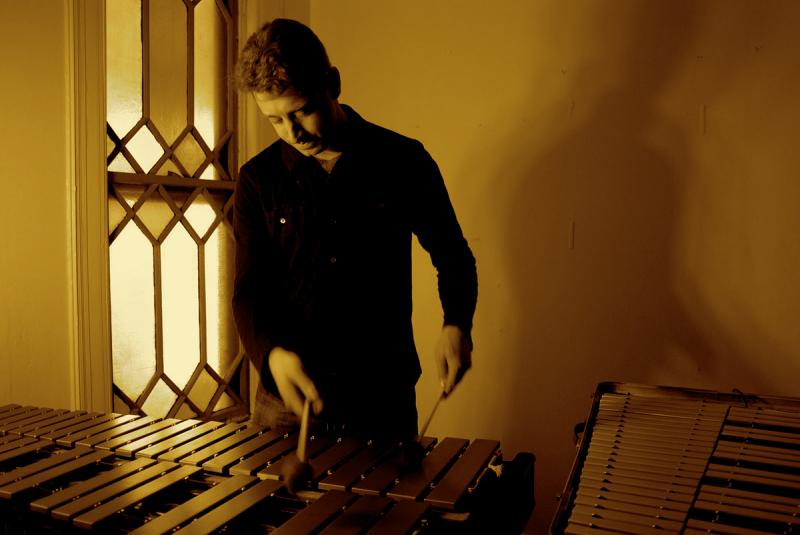
TC: Well, those guys are people with whom I played a lot in the past actually. Matt Clohesy is one of my best friends in New York, I basically called him for every gig I had, jazz, Afro-Cuban, indie rock; you name it, we played it. [Pianist] Danny Grissett and I had played a lot together when he was the house pianist at the now defunct Up Over Jazz Café, in Brooklyn. There was a period where I brought my vibes there every week and just got pummeled by Vincent Herring, who ran the session. It was really great. And Tommy Crane I first met when he was still a student at the New School—we did a lot of jamming together in various settings.
Basically this group came together because we played a gig at Smalls and I loved how the band sounded. Everyone was really paying attention and playing together, and the level of spontaneity and "fun-having" was really high. I just said to myself, "That's the band I want to record with."
AAJ: I'm curious, Danny Grissett has a lot of driving left hand bass hooks that give many of the songs a very distinctive sound. Did you write them for him that way, or is that a product of his style?
TC: Danny is one of my favorites and I can't take any credit for the awesome stuff he did on the record, but yes, I actually wrote out all of those bass lines.
AAJ: Speaking of the bass and the piano bass lines, as I listened to this on headphones I was very impressed by the sound Michael Brorby, at Acoustic Recording, got for you. It's a rich, natural sound.
TC: Yeah, I'm happy with it as well. It was mixed by Damon Whittemore and mastered by Christian Kaufmann, and those two guys definitely played no small part in the overall sound as well.
AAJ: Tom Petty's "Into the Great Wide Open" is a rather story-driven song with a very basic melody. At first blush it's not really something you would expect to hear covered by a jazz vibraphonist. Yet with a minimalist approach the four of you managed to create a beautiful ballad. Do you remember coming up with the idea to do it like that?
TC: Thank you. First of all I really love that song—and I guess I felt a little bit like by moving to Europe suddenly, I had stepped out into the great wide open myself. I also played that song with my hometown best friend, Mike Pedersen, who is a guitarist and singer; we made a record together called Elephantbear [ Hide and Go Seek (JPMC Music, 2008)]. So it has a somewhat personal meaning for me on that level. I love simple melodies that I want to keep singing over and over again. I didn't give the guys any real specific instructions other than saying "keep it mysterious" or something like that.
 AAJ: You also did a hauntingly beautiful interpretation of Björk's "Anchor Song." When you arrange and compose, do you prefer to work on the piano or vibes?
AAJ: You also did a hauntingly beautiful interpretation of Björk's "Anchor Song." When you arrange and compose, do you prefer to work on the piano or vibes?TC: Almost always on the piano. "The Anchor Song" is one of the most haunting songs I've ever heard. I can't decide if the lyrics are incredibly happy or incredibly sad—and the way Björk sings it gives me the chills every time. I wanted to play the piece, but I wanted to capture the "aura" of the piece as much as I could.
The melody and chords are easy, but capturing the mood is something totally different altogether. I wanted to feel the same chills from when we played it as to when I hear Björk sing it. For the piano cadenza at the end I recorded myself improvising off of the opening theme, which I then basically transcribed and gave to Danny to play.
Musical Development
AAJ: What are some of your earliest musical memories?
TC: Watching records spin on my little 45 RPM record player—followed by banging on empty coffee cans: one with the rubber lid for the bass sound, and the other turned over so the metal side was on top for the snare sound [laughs].
AAJ: What kind of music were you exposed to around the house as a child?
TC: My parents listened to The Beatles, plus '70s pop stuff like Foreigner and Abba, but when I was about six, my favorite 45 record was a song called "Razzle Dazzle." A few years ago I listened to it again and it turned out to be a boogie-woogie blues similar to something Allen Toussaint would have produced.
AAJ: Any musicians in the family or instruments around the house?
TC: Everyone in my family plays an instrument. I highly suggest you look up a video on YouTube called "Jammin with Gramma" and get back to me. My grandmother is now 92 years old and she can still play Liszt on the piano.
My parents and sister are very musical too. Every once in a while we would put together a "family band," with my mom on piano, my dad on banjo or guitar, my sister on piano or recorder and I would play a coffee can drum set. If we had family over for Christmas or something, we would gather around the piano and sing Christmas carols in four part harmony.
My sister, who is three years older than me, once sat down at my drum set and proceeded to play all sorts of complicated grooves and fills. I never even saw her sitting at my drum set before, much less playing it, and I told her she's never allowed to do it again!
AAJ: You began with the drums, but you also started playing piano very early? Share a bit about your initial musical instruction?
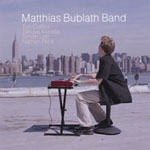 TC: Sure. I was always playing drums, banging on coffee cans, pots and pans, etcetera. But my parents forced me to take piano lessons from age six to eighteen, without stopping. I hated it the whole time actually. But they said, "Someday you'll thank us," and as much as it pains me to admit it, they were right.
TC: Sure. I was always playing drums, banging on coffee cans, pots and pans, etcetera. But my parents forced me to take piano lessons from age six to eighteen, without stopping. I hated it the whole time actually. But they said, "Someday you'll thank us," and as much as it pains me to admit it, they were right.I had lessons from the local piano teacher; my sister had lessons too. She would learn some piece and I would learn the same piece maybe a year later, but because I had heard her practicing the piece I would learn it by ear. Eventually my teacher caught on and then we weren't allowed to play the same pieces anymore.
AAJ: Did your teacher and or parents have an early inkling that you had a musical gift?
TC: They always encouraged me and supported it. When I was six I received a toy drum set for Christmas. When I was ten or eleven I got a real drum set and it was off to the races. I think they were probably frustrated at the same time because they could see that I was good at piano, but I just refused to practice. My sister was much better than I was at piano.
AAJ: Was there a conscious moment when you knew you would become a musician, or was that just a given?
TC: Well the only other options I ever considered were to try and pitch for the New York Yankees, and if that didn't work out, I'd become their radio announcer [laughs]. Suffice to say I think I've made the right choice.
AAJ: I'm guessing you also have some rock band history, did you play drums or keyboard in rock bands?
TC: Of course; I mean, I actually learned how to play the drums from watching MTV. My friends and I had a band called The Puppet Slingers and our number one hit was a song called "Making a Cheese Sandwich," which I'm fairly certain would become some sort of cult hit if we ever released it to iTunes. Hmmmm... I have to make a phone call after this.
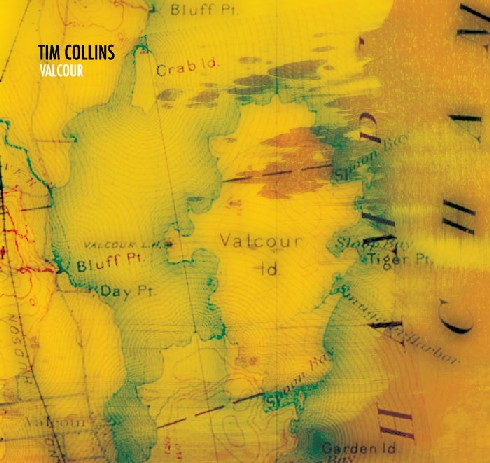 AAJ: Your favorite rock and blues artists?
AAJ: Your favorite rock and blues artists?TC: I was a Beatles fan, but when I started buying my own CDs I had already reached the progressive rock phase of my development. So the first 19 CDs I ever bought were all by the band Rush. Nowadays I'm really into Dr. John, The Meters, Fela Kuti—I like those real earthy sounding grooves.
AAJ: When did you get interested in jazz and who were some of your primary influences?
TC: I first got exposed to "real" jazz, whatever that means, when I went to a summer music camp at age sixteen. Then I started getting into Oscar Peterson, Charlie Parker and stuff like that. I was still only playing drums, but I liked the music and started getting more seriously into it.
AAJ: In college were you in a jazz or classical music program, and could you share a bit about your undergraduate education, and how you transformed yourself into a vibraphonist?
TC: Sure, I took a windy road to being a vibraphonist, as most do I assume. I went to Ithaca College to study percussion. I was a student of the classical department. But when I entered, I had never really played mallets before. I had a background as a good drum set player, and I knew how to play piano and understood harmony.
The teacher there is Gordon Stout, who is a world-renowned classical marimba player and composer. I studied marimba with him and after the first year, I won a local competition and got to perform the Paul Creston Marimba concerto with an orchestra. It was really a fantastic experience. Then my sophomore year I started checking out Milt Jackson and Gary Burton, and decided to buy a vibraphone. That was when I was about twenty.
AAJ: How about your graduate studies?
TC: When I first started at Manhattan School of Music, I was very nervous. I had never really played a lot of jazz with actual people—just practicing in my room and stuff. And then I get there and my first two school groups were with Miguel Zenon, Steve Kirby, Aaron Parks, and John Benitez. Will Vinson was also there, and his playing greatly influenced me. He had, and still has, the most impeccable timing of any musician I've ever met. It was very motivational for sure.
AAJ: What did you take away from the experience of studying with Joe Locke?
TC: Joe was great because he would show me how he practiced, which was similar to what I had been doing. And I thought I must be on the right path. It's pure music with him—we didn't talk about technique or anything, just playing.
AAJ: Your debut album, Valcour (Arabesque, 2007), with Ingrid Jensen and Aaron Parks was impressive. Could you share a bit about how they came to be on your CD?
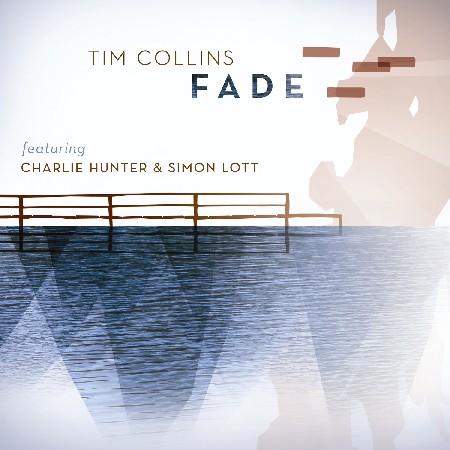 TC: Sure, well I mentioned before that I had met Aaron at Manhattan School of Music, I think he was only fifteen at the time. I have only played a handful of gigs with him, but every time it was a musical highlight. So I had to have him on the record. Ingrid I had met through Matt Clohesy [bassist] and her now-husband, drummer Jon Wikan. We did a lot of jamming and I was able to bring Ingrid to Plattsburgh, NY (my hometown) for a concert series. The following summer I made Valcour.
TC: Sure, well I mentioned before that I had met Aaron at Manhattan School of Music, I think he was only fifteen at the time. I have only played a handful of gigs with him, but every time it was a musical highlight. So I had to have him on the record. Ingrid I had met through Matt Clohesy [bassist] and her now-husband, drummer Jon Wikan. We did a lot of jamming and I was able to bring Ingrid to Plattsburgh, NY (my hometown) for a concert series. The following summer I made Valcour.AAJ: Charlie Hunter produced and played on your second CD, Fade (Ropeadope, 2008). What did you learn from the experience of working with him?
TC: That was huge for me because it made me realize that everything I had done musically up to that point was the result of me trying to mold myself into a style that could be pigeon-holed. Charlie made me realize that by taking chances and allowing the crazy ideas to surface that you might normally keep buried, you are actually way more likely to create something successful.
It was to that end that I decided not to separate my two worlds, however subconscious those worlds might have been: Tim Collins, "jazz" vibes player vs. Tim Collins the guy who stays up all night writing songs and listening to Carole King.
AAJ: That was an ambitious spread you laid out for Fade, from Charlie Hunter to a string quartet.
TC: I realized that the only thing in music that I cared about was whether or not something is worth listening to more than once. I have thousands of CDs with all kinds of music styles. I started asking myself, why can't I get enough of that Shostakovich String Quartet No. 2? Why do I keep wanting to listen to Keith Jarrett's version of "Forest Flower" with Charles Lloyd, or The Beatles Abbey Road (Apple, 1969), or Björk's Vespertine (One Little Indian, 2001)?
I realized that I don't care about genres at all. And for the first time I had a real clear vision of what music I wanted on the album, and even better was that I didn't really care if people thought it might be too far out.
AAJ: Your wife is a European concert violinist, how did your paths cross?
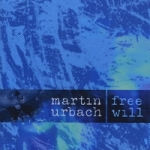 TC: We met in Prospect Park on her first day in New York. But it turns out she was a friend of a friend of an acquaintance sort of thing. You know how small a city New York City is [laughs].
TC: We met in Prospect Park on her first day in New York. But it turns out she was a friend of a friend of an acquaintance sort of thing. You know how small a city New York City is [laughs].AAJ: Do you play music together at home?
TC: We haven't so often, but I have heard her play one Mozart Violin Concerto so many times that I can improvise a very rock pianoish sounding accompaniment that would probably turn Mozart over in his grave. For fun we also adapted an Astor Piazzolla piece for flute and guitar to violin and marimba.
AAJ: Has she had an impact on your musical direction?
TC: Yes, I get to hear her practicing all kinds of music, much of which I hadn't heard before but now really love.
AAJ: You would have great access to strings if you record here in Munich. Do you keep that in mind now when composing?
TC: I probably should!
AAJ: Who are some of your favorite classical composers?
TC: When I was playing in school orchestras, some of my favorites were Ravel's orchestration of Pictures at An Exhibition (Mussorgsky), Tchaikovsky's 6th Symphony, Brahms Symphony 1, Beethoven (I think I like Symphony No 7 the best). The Brandenberg Concerto No. 6 from J.S. Bach—I would actually listen to this in the car after playing at late night jam sessions. And I think that Shostakovitch's String Quartets are some of most amazing pieces ever written. Shostakovitch is so full of surprises, it just never gets boring for me, but at the same time the melodies are mysterious and memorable.
AAJ: Who are some of your wife's favorite jazz artists?
TC: Stephane Grappelli, Diana Krall, Keith Jarrett, Paul Motian. [Laughing] Oh, and Tim Collins of course.
AAJ: You spent a year in Salzburg where you probably walked by Mozart's birthplace regularly. Somehow classical music has come to be associated with musical snobbery and stiff formality, yet when you read about the lives of some of these greats, they seem like they were the rock stars of their day—Beethoven kicked a hole in the wall of his apartment so he could have a view of the trees! Modern classical musicians like Fredrich Gulda enthusiastically embraced jazz. Have you had plenty of contact with classical musicians, and do you encounter many who play or listen to jazz?

TC: Yes, actually. I think most of them listen to at least a little bit of jazz. But the work schedule of a classical musician can be extremely taxing and long, leaving them maybe not wanting to listen to any music at all after having spent the whole day rehearsing.
AAJ: On paper, you wouldn't imagine the vibes could be such an enduring solo instrument in jazz, with its pure and comparatively constant tone quality, and a vibraphonist using hands and arms to achieve what fingers do on many other instruments. Yet they are even used in rock music: The Beatles used them on their original version of "I'm Only Sleeping," The Stones on "Under My Thumb," Donovan, White Stripes, Steely Dan, and even Frank Zappa used them. What do you think it is about vibes and marimba that explains it?
TC: I'm not sure, but if you listen to movie and television soundtracks, vibes are always present. Whenever a private detective is about to walk down a dimly lit alley, it's usually the vibes that are setting the mood with some creepy sounding chords. For lack of a better word they just have a certain (ahem) "vibe." I'm probably going to regret saying that.
AAJ: Speaking of Frank Zappa, I want to ask you about Johnny Otis. It isn't widely known, but Johnny Otis was a vibraphonist and band leader from the 1940s, who went on to make a tremendous contribution to the development of rock and roll, popular blues, and R&B. He even recorded with Zappa in 1969. Even in his late 50s he was cutting-edge, integrating vibes into "Don't It Make You Feel Good" on Watts Funky (J&T, 1972). What's your take on him?
TC: I didn't realize he was a vibes player—I've heard some of the hits that he produced as a pianist. His vibes playing reminded me of Roy Ayers—very bluesy, with the R&B influence.
AAJ: Jim Hart mentioned he listens to guitar players for insights into soloing. How did your approach to soloing develop?
TC: I definitely copied solos from records—usually only by ear without writing it out. I tried to learn solos from all the great vibes players, but I also went out of my way to transcribe solos from other instruments as well, including singers. If I like a certain melody or solo or chord progression, I try to figure it out and play it on the vibes.
AAJ: What's the best new thing you've heard lately that deserves more recognition?
TC: I need to buy some new CDs. I just keep listening to Dr. John's Gumbo (Atco, 1972), over and over again.
AAJ: If you could somehow go back to a few musical events, which would you choose?
TC: I would probably want to go and relive some concerts I actually was at. One would be the first time I saw Bobby Hutcherson, in an empty Iridium in 1997. The next day I started practicing vibes for real. Another would be my first time at the old Smalls to see the Brian Blade Fellowship.
Selected Discography
Tim Collins, Castles and Hilltops (Nineteen-Eight Records, 2011)
Matthias Bublath, Voices (Downhill, 2009)
Thomas Barber's Janus Bloc, Snow Road (D Clef Records, 2009)
Tim Collins, Fade (Ropeadope Digital, 2008)
Matthias Bublath, Second Angle (Self Produced, 2008)
Sam Barsh, I Forgot What You Taught Me (Sunnyside, 2008)
ElephantBear, Hide and Go Seek (JPMC Music, 2008)
Jody Redhage & Fire in July, Ancient Star (Scarlet Tree Records, 2008)
Martin Urbach, Free Will (Self Produced, 2008)
TrioNada, TrioNada (Lofish Music,2008)
Matthias Bublath, Matthias Bublath Band (Self Produced, 2007)
Tim Collins, Valcour (Arabesque Records, 2007 )
Photo Credit
All Photos: Courtesy of Tim Collins
Tags
Tim Collins
Interview
Alan Bryson
Matthias Bublath
Charlie Hunter
Tom Petty
Ulrich Wangenheim
Bjorn Solli
Matt Clohesy
Danny Grissett
Vincent Herring
Tommy Crane
Allen Toussaint
Dr. John
The Meters
Fela Kuti
oscar peterson
Charlie Parker
Milt Jackson
Gary Burton
Miguel Zenon
Aaron Parks
John Benitez
Will Vinson
Joe Locke
Ingrid Jensen
Jon Wikan
Keith Jarrett
charles lloyd
Astor Piazzolla
Stephane Grappelli
Diana Krall
Paul Motian
steely dan
Frank Zappa
Johnny Otis
Roy Ayers
Jim Hart
Bobby Hutcherson
Brian Blade
PREVIOUS / NEXT
Support All About Jazz
 All About Jazz has been a pillar of jazz since 1995, championing it as an art form and, more importantly, supporting the musicians who make it. Our enduring commitment has made "AAJ" one of the most culturally important websites of its kind, read by hundreds of thousands of fans, musicians and industry figures every month.
All About Jazz has been a pillar of jazz since 1995, championing it as an art form and, more importantly, supporting the musicians who make it. Our enduring commitment has made "AAJ" one of the most culturally important websites of its kind, read by hundreds of thousands of fans, musicians and industry figures every month.





















